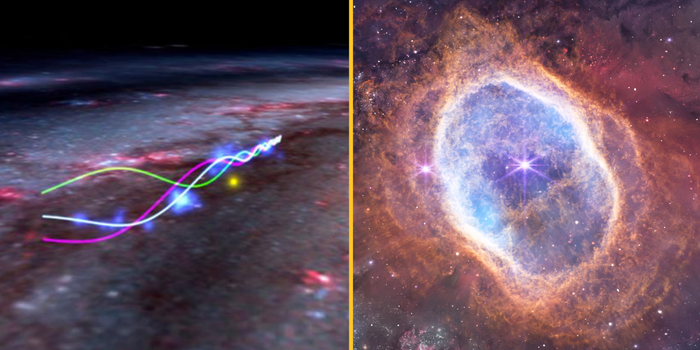No, it’s not that kind of serpent
Scientists have been left baffled by a ‘giant cosmic serpent’ at the edge of the galaxy.
The wave-like structure is a humongous 9,000 light years long, and is wrapped around the spiral arm of the Milky Way.
First discovered a few years ago, the ‘cosmic serpent’ is known as the Radcliffe Wave, and it’s not the kind of serpent that we know about here on Earth.
It is made up of star-forming gas, and scientists have realised that it is actually on the move.
Harvard University’s Ralf Konietzka and his team have found that it is oscillating as a periodic travelling wave, via WION
“By using the motion of baby stars born in the gaseous clouds along the Radcliffe Wave,” Konietzka explained.
“We can trace the motion of their natal gas to show that the Radcliffe Wave is actually waving.”
The Gaia spacecraft has allowed scientists to find out more about the wave, including a 3D map of the structure.
“It’s the largest coherent structure that we know of, and it’s really, really close to us,” Smithsonian Astrophysical Observatory astrophysicist Catherine Zucker said.
“It’s been there the whole time. We just didn’t know about it, because we couldn’t build these high-resolution models of the distribution of gaseous clouds near the sun, in 3D.”
Scientists also discovered that its movement is affected by gravity, with Konietzka likening it to sports fans doing their own wave.
“Similar to how fans in a stadium are being pulled back to their seats by the Earth’s gravity,” he said, “the Radcliffe Wave oscillates due to the gravity of the Milky Way.”
Scientists are still unsure of how the Radcliffe Wave formed.
“Those theories range from explosions of massive stars, called supernovae, to out-of-galaxy disturbances, like a dwarf satellite galaxy colliding with our Milky Way,” Konietzka added.











































